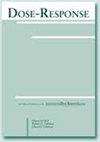低剂量辐射的夸大风险认知:动机和机制
IF 2.3
4区 医学
Q3 PHARMACOLOGY & PHARMACY
引用次数: 0
摘要
辐射是一种已知的致癌物,因为1960年引发了全球范围的健康恐慌。然而,没有证据表明辐射是低于某个阈值的致癌物。爱德华·卡拉布雷斯(Edward Calabrese)教授对线性无阈理论(LNT)的出现进行了研究,并质疑它是否有科学依据。切尔诺贝利事故发生后,许多出版物出现了基于lnt的预测,例如,前面已经审查过的数百万核事故受害者的预测。显然,某些作者夸大人为适度增加背景辐射的医学和生态后果,促成了对原子能的扼杀,这符合化石燃料生产商的利益。一些剂量效应相关性可能归因于暴露队列中注意到的剂量依赖性选择、自我选择和回忆偏差。可以合理地假设,知道自己的剂量较高的个人会更有动力接受医疗检查,同时得到更多的关注。因此,平均而言,较高剂量的人更有可能诊断出疾病。例如,Mayak生产协会(MPA)工人中心脑血管疾病发病率的剂量依赖性增加并未伴随相应的死亡率升高,这可归因于较高剂量的人更频繁地记录轻度病例。根据发病率数据,mpa工作人员每单位剂量白血病的超额相对危险度大大高于死亡率数据。一种可能的解释是潜伏性白血病的更有效的检测,偶尔会出现未经证实的病例。在切尔诺贝利、MPA和Techa河人口中发现非恶性疾病的风险增加。例如,据报告,在mpa工作人员中,每单位剂量的脑血管疾病的超额相对风险高于原子弹幸存者,后者的暴露是急性的,因此预期会更高。值得注意的是,MPA工作人员中脑血管和缺血性心脏病的剂量依赖性发病率的增加并没有伴随着死亡率的增加,这可以解释为在高剂量估计的人群中记录轻度和边缘性病例的剂量依赖性诊断效率。这些研究人员还发现,累计外照射剂量≥0.1 Gy时,MPA工人的脑血管疾病发病率显著增加。相比之下,辐射科委会无法就剂量≤1-2戈瑞与心血管疾病或一般非恶性疾病的过度发病率之间的直接因果关系得出任何结论。由于流行病学研究的偏倚,1-2 Gy的值可能被低估。低剂量暴露与非恶性疾病之间可疑的相关性,对同一研究人员所报告的恶性肿瘤相关性的因果特征提出了质疑。终身动物实验是研究剂量-反应关系的一种很有前途的方法。根据激效的概念,寿命持续时间是一个敏感的终点,可归因于辐射暴露,它可以反映一定范围内的净危害或潜在益处。支持辐射激效的实验证据是相当多的。诚然,并不是所有的实验都支持激效效应,例如,暴露在环境中的老鼠没有寿命延长;其他研究确实报告了啮齿动物和其他物种的寿命延长;细节和参考资料正在审查中。本文章由计算机程序翻译,如有差异,请以英文原文为准。
Exaggerated Risk Perception of Low-Dose Radiation: Motives and Mechanisms
Radiation is a known carcinogen because of the world-wide health scare that was created in 1960. However, there is no evidence that radiation is a carcinogen below some threshold. Prof. Edward Calabrese pursued the emergence of the linear no-threshold theory (LNT) and questioned whether it ever had a scientific basis. After the Chernobyl accident many publications appeared with LNT-based prognostications, for example, of millions of victims from nuclear accidents, reviewed previously. Apparently, certain writers’ exaggeration of medical and ecological consequences of the moderate anthropogenic increase in the background radiation contributed to a strangulation of the atomic energy, which was in the interests of fossil fuel producers. Some dose-effect correlations may be attributed to a dosedependent selection, self-selection and recall bias noticed in exposed cohorts. It can be reasonably assumed that individuals, knowing that they had higher doses would be more motivated to undergo medical examinations being at the same time given more attention. Therefore, diagnosis of diseases would be on the average more likely in people with higher doses. For example, the dose-dependent increase in incidence of cardioand cerebrovascular diseases among Mayak Production Association (MPA) workers was not accompanied by a corresponding elevation of mortality, which can be attributed to a more frequent recording of mild cases in people with higher doses. The excess relative risk per unit dose for leukemia amongMPAworkers, using incidence data, has been considerably higher than that using mortality data. A more efficient detection of latent leukemia with occasional registration of unverified cases is a probable explanation. Elevated risks of non-malignant diseases have been found in Chernobyl, MPA, and Techa River populations. For example, the excess relative risk of cerebrovascular diseases, per unit dose, among MPAworkers was reportedly higher than in the atomic bomb survivors, where the exposure was acute and thus would be expectedly higher. Remarkably, the dosedependent incidence increase in cerebrovascular and ischemic heart disease among MPA workers was not accompanied by any increase in mortality, which can be explained by a dosedependent diagnostic efficiency with recording of mild and borderline cases in people with higher dose estimates. According to the same researchers, the incidence of cerebrovascular diseases was significantly increased among MPA workers with cumulative external doses ≥ 0.1 Gy. For comparison, UNSCEAR could not make any conclusions about immediate causal relationships between doses ≤ 1–2 Gy and excess incidence of cardiovascular or generally of non-malignant diseases. The value 1–2 Gy may be an undervaluation due to bias in epidemiological studies. Doubtful correlations between low-dose exposures and nonmalignant conditions call into question the cause–effect character of such correlations for malignancies reported by the same researchers. A promising approach for research of dose-response relationships is lifelong animal experiments. Life span duration is known to be a sensitive endpoint, attributable to radiation exposures, which can reflect the net harm or potential benefit within a certain range, according to the concept of hormesis. The experimental evidence in favor of radiation hormesis is considerable. Admittedly, not all experiments supported hormesis, for example, showing no life lengthening of exposed mice; other studies did report life lengthening of rodents and other species; details and references are in reviews.
求助全文
通过发布文献求助,成功后即可免费获取论文全文。
去求助
来源期刊

Dose-Response
PHARMACOLOGY & PHARMACY-RADIOLOGY, NUCLEAR MEDICINE & MEDICAL IMAGING
CiteScore
4.90
自引率
4.00%
发文量
140
审稿时长
>12 weeks
期刊介绍:
Dose-Response is an open access peer-reviewed online journal publishing original findings and commentaries on the occurrence of dose-response relationships across a broad range of disciplines. Particular interest focuses on experimental evidence providing mechanistic understanding of nonlinear dose-response relationships.
 求助内容:
求助内容: 应助结果提醒方式:
应助结果提醒方式:


